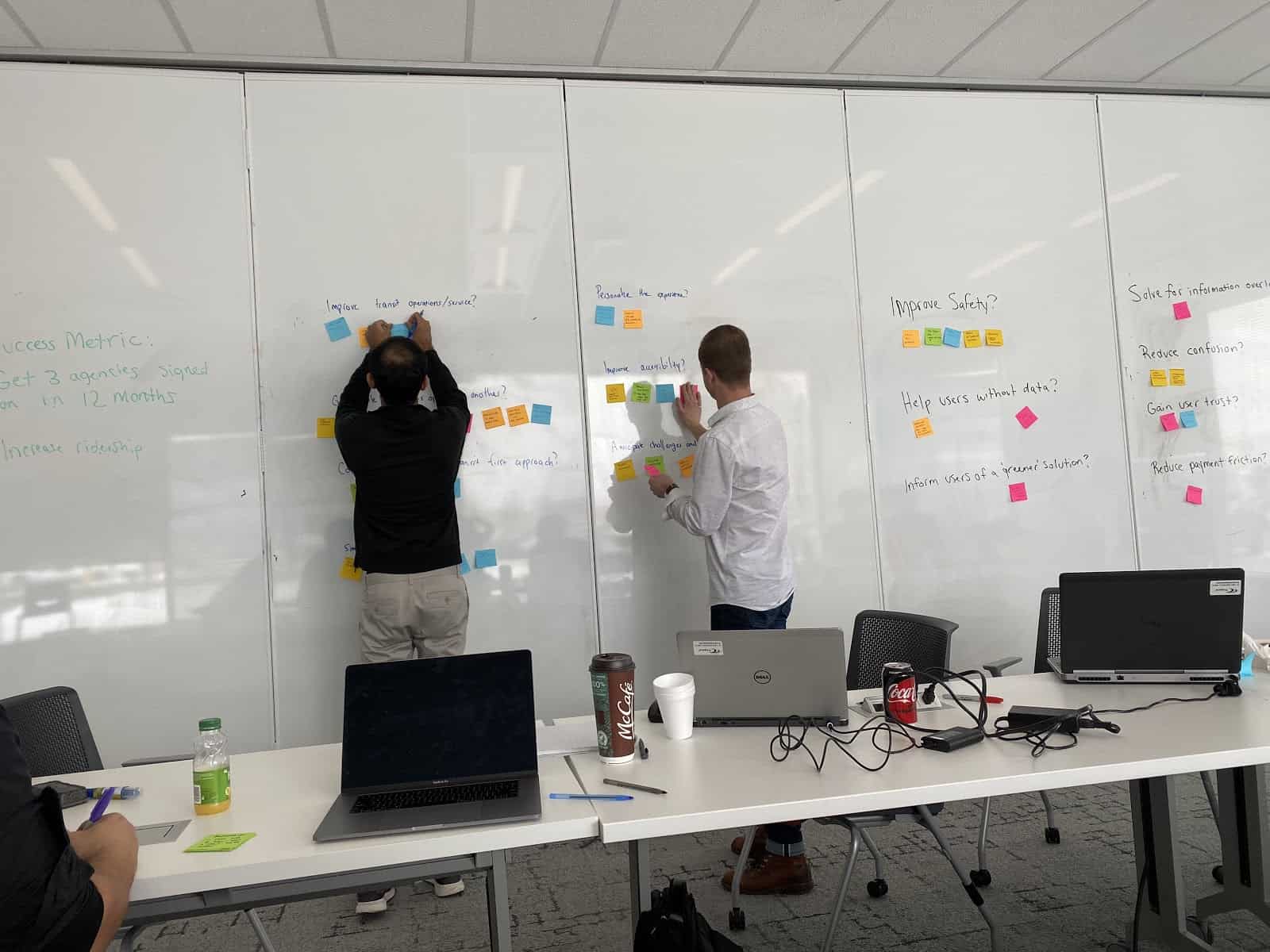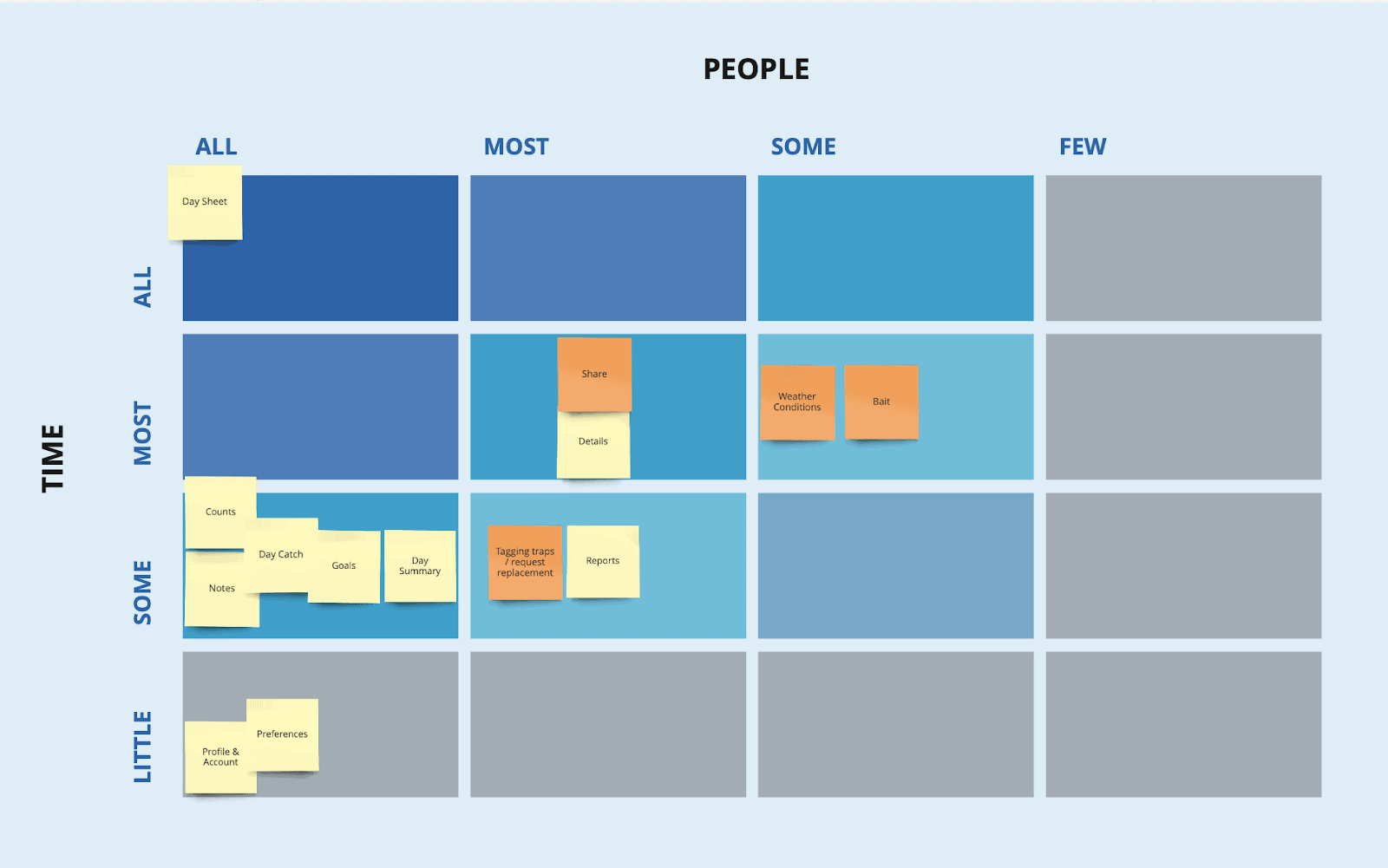As Benjamin Franklin famously said, “By failing to prepare, you are preparing to fail.”
This quote guides our team in every project we take on, especially app builds. One tool used in the industry for preparing to build an app is called a service blueprint.
A service blueprint combines your project goals with market insights to map out a process for delivering the best user experience.
At MindSea, we call our service blueprint The Mobile App Blueprint, and it’s our behind-the-scenes map of the entire user journey—and how we’ll deliver it. We create each blueprint by collaborating with our clients and conducting intensive market research and user testing.
The blueprint process has a lot of steps, and that’s because building a successful app takes time. But as our success rates show, it’s worth it!
In this post, we break down the three major reasons we continue to choose the blueprint approach to build mobile apps.
Let’s get to it.
We Have a Strategic Plan of Attack
In the early stages of blueprinting, the primary focus is establishing the app owner’s goals. We do this through a preliminary intensive workshop with the client in which we share and critique ideas to keep all parties involved. The photo below gives a glimpse into that process.

The goals we establish aren’t solely about the app itself but also about the business outcomes: How does the app fit into the company’s overall strategy? All of these goals are important in the creation of the app and serve as reference points throughout the build.
The hypothetical paths of getting users to accomplish said goals are referred to as scenarios. Developing user scenarios helps app owners, developers and designers to envision how and why people will use the app. Through collaborative workshops and market research, we can answer basic but essential questions: Is there product-market fit? Which features will help accomplish our goals? We may learn at this stage that a similar product is already on the market, or is missing important elements we hadn’t considered.
Equipped with this information, we can approach the app build with a strategic plan of attack. Starting with clear goals and a coherent vision keeps everyone on the same page and prevents future delays.
We Can Define the “Why” Behind Every Feature
Home builders don’t add energy-efficient windows and home offices to their blueprints for no reason—they know that’s what buyers are looking for. Adding features to an app should also be a calculated decision based on the user’s needs.
User journey mapping helps us define the “why” behind every decision we make during the build. These maps illustrate how users navigate the app and access all of its features step by step, highlighting blindspots that could have otherwise been overlooked.
Below, you can see the matrix that guides us in establishing a hierarchy of app features—a hierarchy that comes to life in user testing.

User testing plays a fundamental role in the blueprint process. By watching how real people interact with the app, we can build a friendlier user experience and a better final product.
It’s also easier to allocate budget, time and other resources once we know which features will be included in the app. Then both our team and our clients can go into the building process confident about what to expect.
We’re Able To Set You Up for Success
Each step in a blueprint is equally important for accomplishing our end goal. When done right, the blueprint is a roadmap to success!
As mentioned, the work we put into a blueprint allows all stakeholders to visualize the end-to-end process of their mobile app build.
By mapping out each step of the build, we can better estimate budget and timelines, making it easier for your team to plan for other activities like investor pitches and promoting the launch.

A service blueprint not only guides us to delivering a final product; it also provides a glimpse into the future of the app. Collecting and analyzing user insights allows the app owner to anticipate how they might grow within their space—for example, with ongoing app maintenance and optimizations.
Wrapping Up
Service blueprints help developers and app owners collaborate toward their goals from ideation to launch—and beyond.
Through many clients and many app builds, our own Blueprint process has been honed for success. We think it works, and so do our clients:
“The Blueprint was the first step in launching our award-winning app.” —Jeff Nearing, Chronicle Herald
We’ve designed over 50 apps, and more than half have been featured in the Apple App Store or Google Play Store. We can help your app stand out too—let’s chat.



